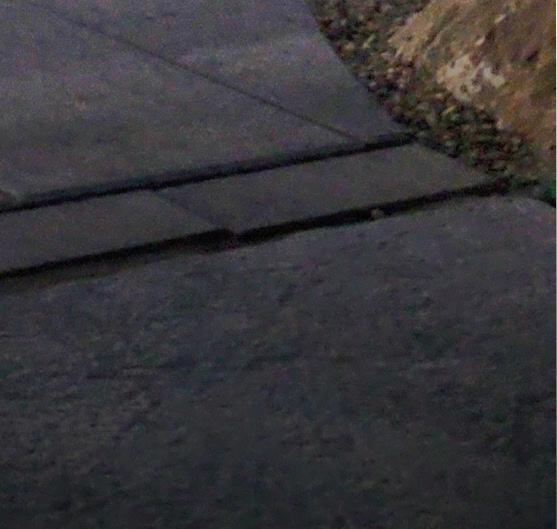HEALTHY FARMS, FORESTS, FOOD, AND FAMILIES IN POLK COUNTY







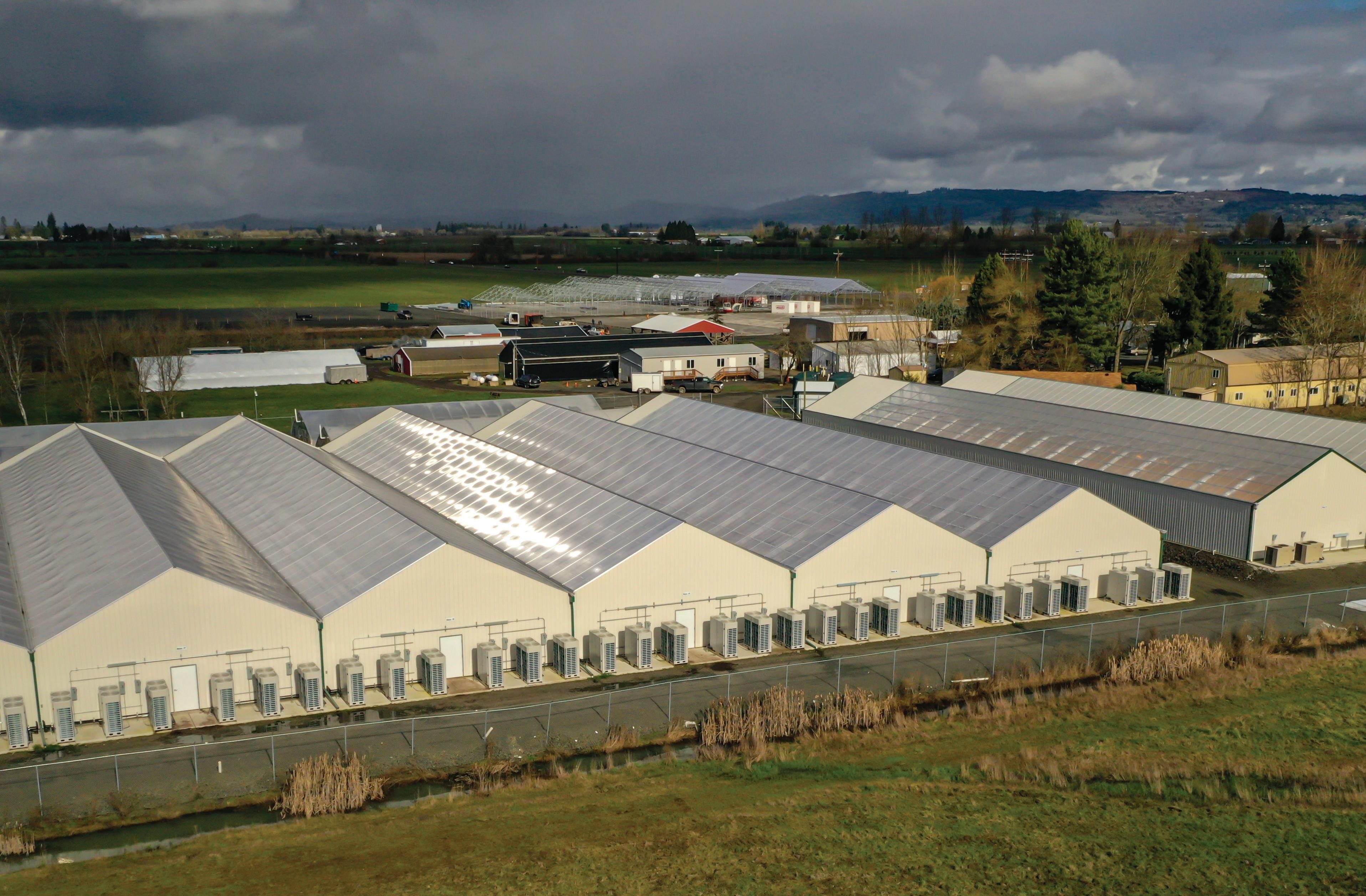

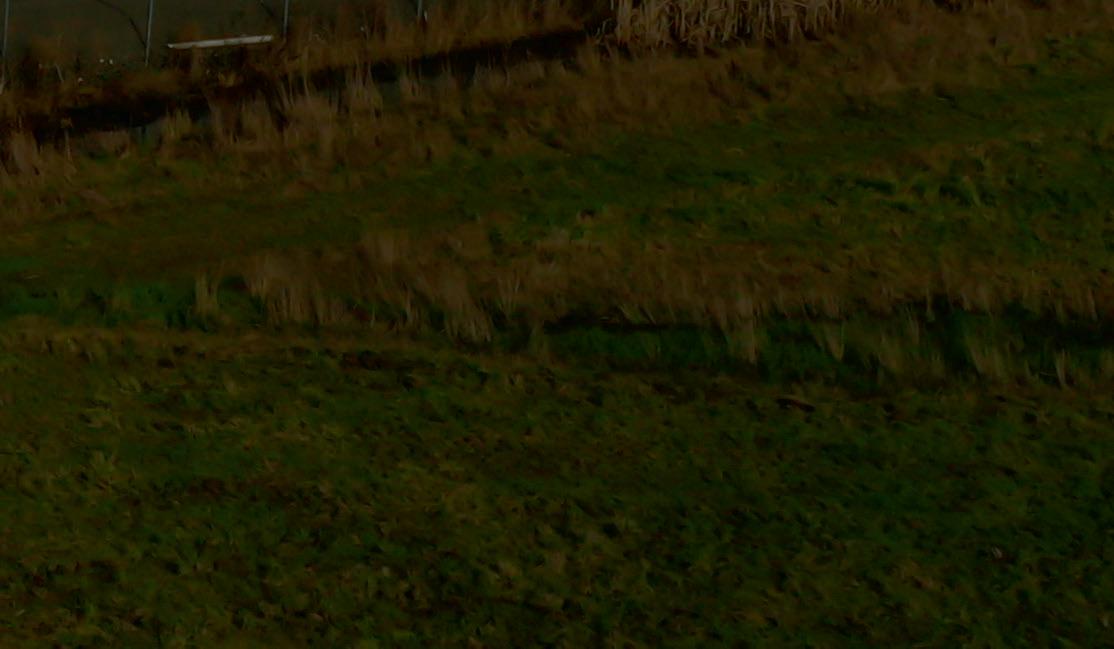

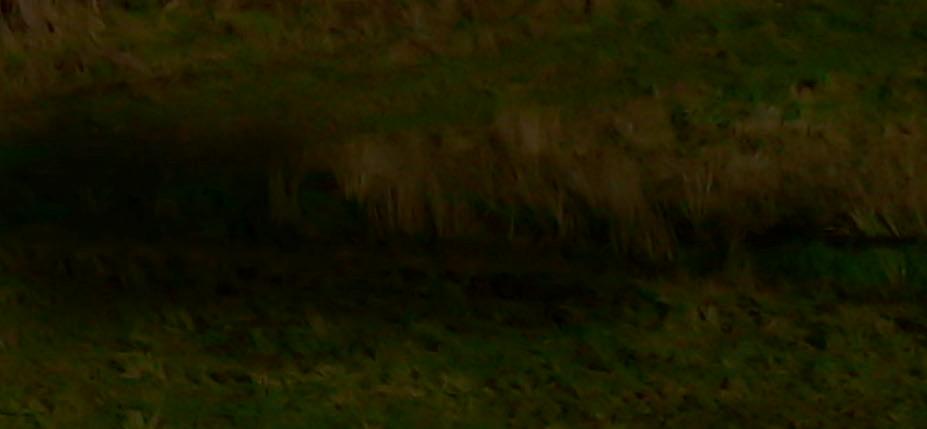



Learn more about OSU Extension events and register by going to extension.oregonstate. edu/county/polk/events

County Office of the Oregon State
Extension Service provides re search-based educational information and programs in Agriculture, Forestry, 4-H/Youth and Family and Community Development for the citizens of Polk County.
OSU Extension’s mission is to convey re search-based knowledge in a way that is useful for people to improve their lives, their homes, and their communities.
289 E Ellendale, Suite 301 Dallas OR 97338 | 503.623.8395
extension.oregonstate.edu/polk
Mon-Wed 9am-12pm, 1pm-5pm Thurs & Friday Closed or by appointment
Nicole Anderson | Field Crops 503.434.8912
Alisha Atha | Office Manager & County Leader 971.612.0022
Brooke Edmunds | Community Horticulture 971.612.0026
Susan Busler | 4-H Youth Development 971.612.0028
Audrey Comerford | Agritourism 503.689.8241
Jenifer Cruickshank | Dairy 971.600.1222
Mitch Lies | Cultivating Editor mitchlies@comcast.net
Chrissy Lucas | Well Water Program 541.766.3556
Richard Riggs | Regional Director 503.269.6389
Rachel Villwock | Front office & Comm. Horticulture Support 971.612.0023
Hayley White | Agriculture Outreach Coordinator 971.612.0027
Brad Withrow-Robinson | Forestry & Natural Resources 541.766.3554
21 – Conservation Spotlight Podcast, KMUZ, 8am &6pm
22 - 23 – OSU Extension Ag Innovations Conference -
Sustainable Agriculture @ North Willamette Research and Extension Center Aurora, OR *
20 - Oct. 20 – (Thursdays) - Living on the Land Series
3 - 24 – OSU Extension Sustainable Landscape Series – Online *
10 – Indigenous Peoples’ Day – Polk SWCD office closed
12 – Polk SWCD Board Meeting – 6pm
14 – Olive Field Day @ NWREC
14 - 15 – Polk SWCD Native Plant Sale @ Delbert Hunter Arboretum, Dallas
18 – OSU Extension Make your Garden into a Pollinator Haven workshop – Online *
19 – Conservation Spotlight Podcast, KMUZ, 8am & 6pm
21 – Polk Co. 4-H Open House – 5pm-8pm
08 – Growing the Good Stuff: from Sweet Potatoes to Bitter Melons – Online *
09 – Polk SWCD Board Meeting – 6pm
11 – Veterans Day – Polk SWCD office closed
16 – Conservation Spotlight Podcast, KMUZ, 8am & 6pm
24 –Thanksgiving holiday –Polk SWCD office closed
24 - 25 – OSU Extension CLOSED in observance of Thanksgiving
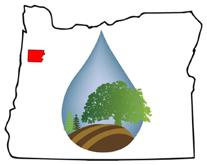
Nearly 3,000 Soil and Water Conservation Districts (SWCD) across the United States are helping local people conserve land, water, forest, wildlife, and related natural resources. SWCDs are charged with directing programs to protect local renewable natural resources.
Polk SWCD was formed in April 1966, and promotes erosion control, reduction of invasive species, improvements to farms and forests, control of animal waste, as well as improving wildlife habitat and water quality/ quantity issues in Polk County. The Polk SWCD is administered by 7 locally elected volunteer directors representing 5 zones and 2 at-large positions within the county. The Polk SWCD is a source of information and education on natural resources.
580 Main Street, Suite A Dallas OR 97338 | 503 623 9680 www.polkswcd.com Mon-Fri 8am-4:30pm
Marc Bell | Senior Resource Conservationist marc.bell@polkswcd.com | Ext. 103
Morgan Neil | Outreach Coordinator morgan.neil@polkswcd.com | Ext. 101
Polk SWCD is an equal opportunity provider and em ployer and prohibits discrimination in all its programs and activities on the basis of race, color, national origin, sex, religion, age, disability, political beliefs, sexual orientation, or marital or family status. Persons with disabilities who require alternative means for communi cation of program information should contact the district office at 503 623 9680.
Oregon State University Extension Service prohibits dis crimination in all its programs, services, activities, and materials on the basis of race, color, national origin, reli gion, sex, gender identity (including gender expression), sexual orientation, disability, age, marital status, famil ial/parental status, income derived from a public assis tance program, political beliefs, genetic information, vet eran’s status, reprisal or retaliation for prior civil rights activity. (Not all prohibited bases apply to all programs.)
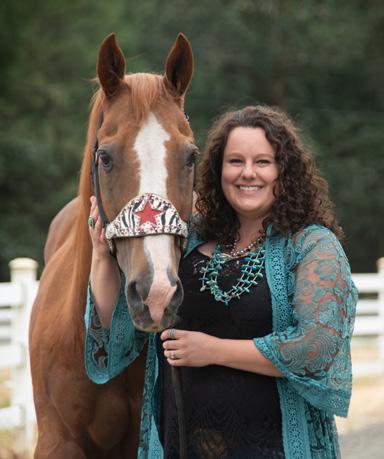

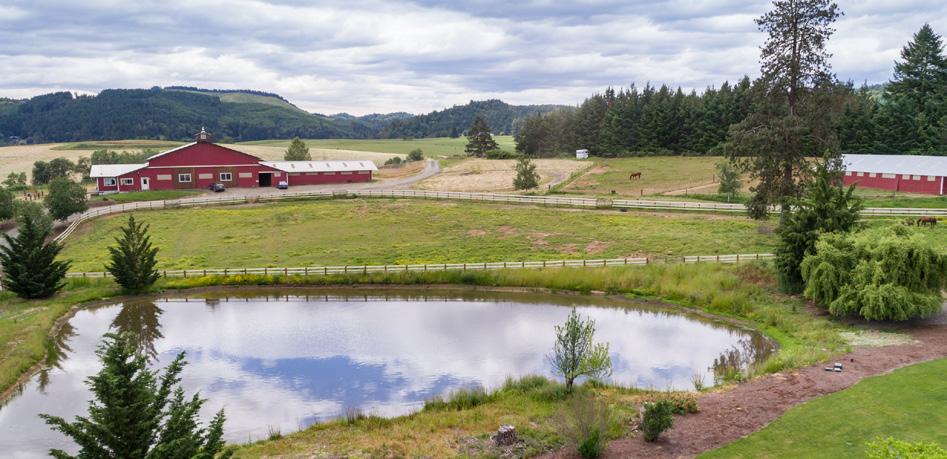
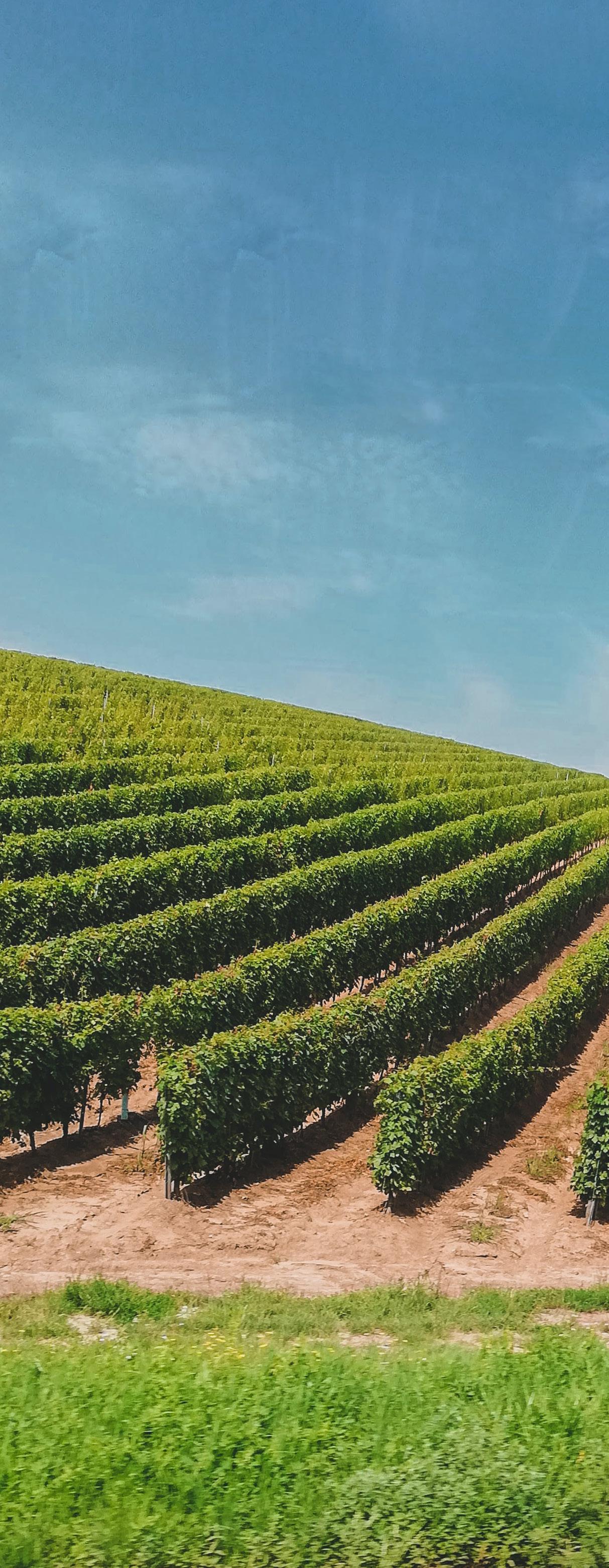
It’s been a long journey, and in some respects, it’s just getting started after ten Polk County vineyard own ers earlier this summer earned their own American Viticulture Area.

On July 5, the Mount Pisgah-Polk County AVA be came the Willamette Valley’s eleventh AVA and the state’s twenty-third.
Now, according to Brad Ford of Illahe Vineyards, who led the effort to form the AVA, it is up to the vineyard owners and winemakers to do something with the desig nation.
“AVAs range from extremely valuable, like those of Napa Valley and Sonoma Valley, to being just informa tion about where the grapes were grown,” Ford said. “We would like to be in the ‘extremely valuable’ category over time. But that is going to take a lot of recognition and it is going to take years of making good wines.”
Ford’s journey to form the AVA started in 2016 when he convened a meeting with area vineyard owners. The owners believed that wine grapes grown in the area were
unique from the larger Willamette Valley AVA. So, with the help of Jeff Havlin of Fender’s Rest Vineyard, who led the effort to form the nearby Van Duzer Corridor AVA in 2019, Ford wrote and submitted a petition to Alcohol and Tobacco Tax and Trade Bureau, or TTB, in October of 2017.
In the petition, Ford highlighted the area’s unique to pography, soils and climate.
Take the soils, for example. Only a very small percentage, about 2.1 percent, of the soils in the Mount-Pisgah AVA derived from the Missoula Floods, which washed through the Willamette Valley 13,000 to 15,000 years ago and from which most of the valley’s soils derived. And the Willakenzie, Bellpine and Jory soils that dominate the AVA sit atop Siletz rock, the oldest rock formation in the Willamette Valley. The Mount Pisgah area, Ford wrote, is the only spot in the Willamette Valley that combines sedimentary soils with such ancient material.
Vineyards on the new AVA also are higher in elevation than vineyards in much of the surrounding area and have fewer growing degree days than much of the Willamette Valley. For example, the average annual growing degree days for Mount Pisgah is 2,543, whereas the surrounding
 Photo by Mitch lies Brad and Bethany Ford, at their Illahe Vineyards, own and operate one of ten vineyards and three wineries in the new Mount Pisgah American Viticulture Area.
Photo by Mitch lies
Visible in the foreground and background are some of the ten vineyards in the new Mount Pisgah American Viticulture Area. Mount Pisgah is the second smallest of Oregon’s 23 AVAs.
Photo by Mitch lies Brad and Bethany Ford, at their Illahe Vineyards, own and operate one of ten vineyards and three wineries in the new Mount Pisgah American Viticulture Area.
Photo by Mitch lies
Visible in the foreground and background are some of the ten vineyards in the new Mount Pisgah American Viticulture Area. Mount Pisgah is the second smallest of Oregon’s 23 AVAs.
“AVAs range from extremely valuable, like those of Napa Valley and Sonoma Valley, to being just information about where the grapes were grown,”
areas total is 2,661. Go a little east, and the city of Salem accumulates nearly 3,000 growing degree days (2,903) in an average year. Wine grapes in the Mount Pisgah AVA are grown between 260 and 700 feet in elevation with a majority either south facing or east facing.
The AVA, which includes three wineries among its ten vineyards, is the second smallest AVA in Oregon, totaling only 5,850 acres, with about 530 acres planted to vineyards. Vineyards in the AVA include Illahe, Amalie Rob ert, Ash Creek, Croft, Erratic Oaks, Fern Creek, Freedom Hill, Mistletoe and Open Claim. Wineries operating in the AVA include Illahe, Amalie Robert and Open Claim.
Pinot noir is the dominant grape grown in the area. Chardonnay and Pinot gris are also grown.
Vineyard owners chose the Mount Pisgah name after their first option was rejected by TTB. “They said you have to have a name with historical relevance,” he said of the TTB’s response. The owners settled on Mount Pisgah-Polk County because each of the vineyards is on the slopes of the small mountain, which, while not well known, can be seen on almost every map of the area, Ford said.
“If you look at historical records or on U.S. Geological

Service maps, you can see that this little bump on the land is named Mount Pisgah,” Ford said. “It is an actual mountain.”
The petitioners included the name of the county in the official name because Mount Pisgah is found in other locations in Oregon and in other states.
While many are just now learning about the quality of grapes grown in the Mount Pisgah AVA, it is nothing new to Oregon wineries, such as Ken Wright Cellars and Bethel Heights, who for years have been purchasing grapes from Mount Pisgah vineyards.

Initial plans to promote the AVA are to include the Mount Pisgah name on wine labels. Vineyard owners also are looking to start a marketing group, though those efforts are still in the initial stages, Ford said.
“We are small, so we will start promoting our AVA slowly,” Ford said. “But I think that we will accelerate pretty quickly, because we have high quality growers and a high density of grape plantings, and we have a beautiful place. So, when people start to make wine tours here, they are going to be impressed with what they taste and what they see.”
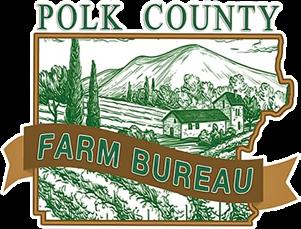


farmers give the best care to their

The best time to manage weeds is in the fall and spring. During late summer, weeds are large, flower ing, and harder to pull. Using herbicide is ineffective at this stage, and the plant will go to seed. In the fall, the plant is smaller, easier to pull, and herbicides are more effective. If you had weedy areas during the summer, now is the time to make a plan and start managing them. Don’t forget about your weeds now that they aren’t as obvious. Here are a few common weeds and methods for managing them.


Depending on your preference, control tansy ragwort through mechanical methods like hand digging and pulling or by chemical methods for large infestations. Remove as much of the taproot as possible when hand pulling or digging. Apply herbicide when the plant is in the rosette stage before bolting, and remove plants from areas with livestock after pulling or spraying as it is highly toxic. The Oregon Department of Ag riculture has reported that biocontrol agents for tansy ragwort (flea beetle and cinnabar moth) were surveyed and found to be present across the county. They are not planning a release of the insects at this time and they are not available for purchase. Studies have shown that the insects manage tansy populations over time, but we recommend using the management strategies above to reduce the tansy population on your property.

Canada thistle has an extensive root system and will take dedication if you prefer mechanical methods. An option is to mow or hand cut before the seeds set, every 3 to 4 weeks, to exhaust the plant’s reserves. When using herbicide, the most effective time to apply in the fall is after some regrowth but before the first frost.
Blackberry thickets are relentless but are manageable over time. Tilling or digging up blackberry shoots can reduce the existing plants. However, create competition to reduce the regrowth by planting something in its place. Perennial grasses or native shrubs can shade-out blackberry and are effective over time. There are also effective herbicides labeled for blackberry. Do not cut down or mow plants before herbicide application, this reduces leaf area and affects the amount of herbicide taken up by the plant.
Due to root reserves and seedbanks you will need to repeat your treatments over multiple seasons. A combination of mechanical and chemical methods is the most effective, but it depends on your property goals. Always follow the directions and restrictions on the label because herbicides can differ by recommended timing and appli cation rates. The Pacific Northwest Weed Management Handbook is an excellent resource for learning about the herbicide options by plant spe cies: pnwhandbooks.org/weed
Above all, treat the root causes as much as the weeds themselves. Have a plan to reseed or replace the weeds with other plants. If you have grazing animals, learn about proper pasture management and create a heavy-use area to keep animals off wet grass stands. Weeds will never go away, but management will get easier if you are consistent.

Contact us if you would like to learn more about weeds and pasture management. We can connect you with resources, identify plants, and help you create a weed management plan that fits your goals.
Polk SWCD Technical Assis tance - www.polkswcd.com

OSU Extension Polk Countyextension.oregonstate.edu/polk
Tansy ragwort leaves. Photo by Steven K. Sullivan, Close up of canada thistle flowers. Photo by Berry, R.E. and L.B. Coop Himalayan blackberry leaves. Photo by brewbooks on flickr.
Photo creditsNow that the 2022 Polk County Fair is one for the history books, we would like to take the time to thank the community for your tremendous support for 4-H. Thanks to the parents and leaders for helping young people gain new knowledge and skills and reach their project goals.
We greatly appreciate our many award donors. It helps us to hon or our outstanding award winners ranging from fair award prize money to college scholarships. It’s so exciting to watch the smiles and elation as kids earn their first blue ribbon or win a trophy.
The Polk County Livestock Associ ation is tremendously helpful as the sponsor and coordinator of our Mar ket Auction program; and of course, the Auction wouldn’t be successful without the many auction buyers. Profits from the sale of animals will be used to pay animal feed bills, invest in school clothes and supplies or school fees and college tuition and going right back into the local economy.
Thanks to the Fairboard and man agement for the terrific job organizing the details. The superintendents do a tremendous job organizing the barns, classes and judging. It takes hundreds of hours of preparation to carry out the fair.
It truly takes a village and Polk County 4-H is thankful to be part of your village. Thanks for your part in helping to shape the leaders of tomor row.
Our new program year begins October 1st. The enrollment forms are ready now. We’ll be meeting soon to evaluate fair and come up with the new year’s offerings of STEP classes and educational programs. Watch our Polk County 4-H webpage, extension. oregonstate.edu/4h/polk, and Facebook page @PolkCountyOregon4H, for announcements of upcoming programs.
When one thinks of 4-H, we typi cally think of kids and animals. But we have something for folks of all ages and backgrounds - adults too.
Adults can have fun working with kids sharing what you love. Whether it be farming and animals, woodwork ing and robotics, sewing or embroi dery. You don’t even have to have the background. You can come in as an assistant leader and learn right along with the kids.
Don’t worry, we’ll train you! We have on-line learning modules and New Leader Education geared just to Polk County. There are also ongoing trainings as you learn more about your project area by attending workshops, clinics, field days or STEP (short term educational programs) classes.
Here are some example of leadership roles we’re looking for… Club Based Volunteer – The Club Based Volunteer takes leadership for a group of young people to share your knowledge and skills for a particular project area. Your club might meet monthly, weekly or twice a month. Whatever your schedule can handle and the topic you cover requires.
Assistant Club Leader – Your role is
to help the club based volunteer with coordination of the club. The assistant leader may take the leadership for a particular project or specific area of the program.
STEP Volunteer – STEP = Short Term Educational Program. You have a skill or idea you would like to share with others, but don’t want to take on a club. Your idea is ideal for a single session class or a short series. You come in…teach your session…and we’ll see you again when you want to teach something else. It’s a great way to share a skill with others!
Resource Leader – The Resource Leader has extensive knowledge in a particular project area. Take horses as an example. You’ve been involved in the horse industry for many, many years. You know everything about horses from nutrition to dressage. You’re an ideal person to serve as a resource leader and help other new leaders with the subject matter exper tise.
You can see, there are lots of ways to get involved with 4-H as an adult. Grown-ups can learn too and share their knowledge and skills with others. You don’t have to let the kids have all the fun without you.
WHEN Friday October 21, 2022
- 8pm WHERE
Polk County Fairgrounds Bld 6 (520 S Pacific Hwy W Rickreall, OR 97371)
4-H empowers youth ages 5 to 18 through hands on learning. Please join us at the 4-H Open House to learn more!
LastDecember and January, we asked agricultural producers in the Willamette Valley whether their farming operation incorpo rates some form of agricultural tourism and farm-direct sales or if they are planning to in the future.

Ninety-eight Oregon farmers participated in the survey. Producers in six Oregon counties were targeted for the survey: Yamhill, Polk, Marion, Linn, Benton, and Lane. Their farming experience included beginning farmers who have been in business less than 5 years (17%), those who have been farming for more than 20 years (38%) and many in-between. The number of acres the respondents farmed also varied, ranging from less than 5 (27%) to more than 50 acres (32%). As expected, the range of crops produced by the survey participants was large. The top ten ranked were vegetables, berries, tree fruits or nuts, herbs, poultry for eggs, grapes, cut flowers, pasture/forage/hay, nursery stock, and bees.
Some key findings from the survey are shared below to bring awareness of types of on-farm activities and challenges of opening farms up to the public.
The majority of the respondents are already engaged in some form of agricultural tourism, with 74% saying yes and 26% no. Out of those currently not engaged in agricultural tourism, 52% of those plan to and 33% are considering the option.
Of those that are currently engaged with agricultural tourism, a major ity (42%) have been doing so for more than 10 years. Table 1 shows the number of years each respondent has been participating in agritourism.
Photo by Audrey ComerfordSurvey participants indicated which agricultural tour ism activities they are currently offering as a part of their agritourism business and which they anticipate offering in the future. See Figure 1.

Respondents also shared information about the indi
relating to incorporate agricultural tourism into their business model. This question was asked in an open-end ed format.
Identified challenges related agritourism and selling products direct to consumers are:
Information on point of sale (POS) systems
Navigating the Farm Direct rules
Declining sales after needed price increases to cover rising costs
Maintaining a reliable workforce both for sales and field
Costs of permits
Sourcing insurance
Limitations due to liability and insurance coverage (i.e. no ladders on U-pick operations)
vidual agritourism activities they offer or would like to offer in the future, see Table 2. Table 2. Individual Agricultural Tourism Activities
Agritourism Activities
Tours
Small private events
Livestock/farm animals on display
Display gardens
farm days
Festivals (harvest, flower, etc.)
events
trails
to table dinners
riding
Currently
44% of the respondents reported they produce and sell some form of value-added products while 25% say they plan to in the future. Of those already selling, products include items such as: dried flowers, wreaths, candles, jams, jellies, pickled items, herbal body care items, sauces, soaps, cider, baked goods, CBD products, yarn, roving, teas, salad dressings, essential oils, salsa, and bees wax products.
Survey participants reported a number of challenges
Funding for cost of infrastructure required for licens ing and insurance
Access to small-scale processing equipment (dehullers, IQF locations, dehydrators)
Marketing and advertising agriculture operations to the general public who are non-ag related
There were specific agricultural tourism and on-farm activities that were reported to have their own challenges. Food processing, farm to table meals, and wanting to offer educational opportunities were specifically called out. Other participants wanted to know what activities are actually desirable and successful before implementing them.
Because this survey was released during the COVID-19 pandemic, respondents also reported state regulations and lack of visitors also proved to be a chal lenge.
When it comes to OSU Extension communicating with producers, they ranked emails as the most preferred method followed by an e-newsletter and then social media.
Participants were asked to identify 3 or 4 topic areas for educational programs and resources would be of most interest to them. See Table 3.
safety and
product
stands
land use and zoning
about health codes, buildings codes,
media
business
new agritourism activities into

Results also show there are specific learning and out reach opportunities related to marketing and tourism. When asked if the participants were connected with their local tourism Destination Management Organi zations (DMO), chamber of commerce or other local tourism organizations 54% said no and 18% did not know what those were. In relation to that, only 36% of respondents said they were involved in a cooperative marketing effort like a food or farm trail but 37% said no but they would like to be.
The information gathered from this survey will be used to inform programing, resource development and support in the future. Based on the number of produc
ers interested in receiving an OSU Extension agritour ism-specific newsletter (76% yes, 21% maybe) the team has started a quarterly newsletter with the first issue being released summer of 2022. To subscribe, follow this link eepurl.com/h0GGnj
A new online course, Developing a Successful Agri tourism Business in Oregon, was created and launched spring 2022 to address the basic of agricultural tourism. This course is for farmers and ranchers interested in add ing an agricultural tourism business to their operation and covers the following topics:

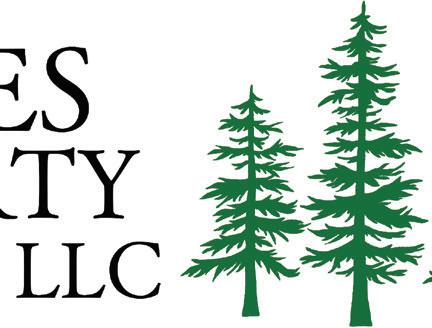
Types of agritourism activities, Incorporating them into a business plan, Legal requirements, Risk management, Marketing, And customer service/hospitality. More information on the course can be found at beav.es/wYh Workshops, field tours, online resources, etc. will continue to be developed by the OSU Extension Agri cultural Tourism Team on the highly ranked topic areas. The resources will be housed on the program website at beav.es/w6M
We are grateful to all those who participated in the survey and encourage you to contact us with any ques tions or ideas as this program continues to develop.
We carry garden compost, Raised bed garden mixes and compost blended lawn mixes. We offer several sizes of round rock for drain rock needs, lawn decor, and the dry river bed look mix. In addition we carry crushed rock for your driveway needs.


to schedule a delivery U-haulers welcome. Call for

 BY SOPHIA HAMPTON
BY SOPHIA HAMPTON
Hello, my name is Sophia Hampton, and I’ve had the pleasure of working as an intern this summer with the OSU Extension Small Farms Program in Marion and Polk Counties and the Polk SWCD with Hayley White. I’ve lived in McMinnville my entire life and will be heading to Seattle in a couple weeks to start my second year at Seattle University. Although I don’t have a lot of experi ence with farming and agriculture, as an Environmental Studies and Public Affairs double major, these topics are relevant and provide an interesting lens to view environmental issues through.
This summer, I’ve mainly been running social media pages, putting together the email newsletter, and creat ing marketing materials for the Small Farms Program. I feel more confident in my graphic design abilities and have gained a new understanding of the importance of marketing and effective marketing strategies. I have enjoyed this aspect of my internship, and I know these skills will be valuable in the future. Along with this, I’ve helped with the planning of various events such as Small Farm Social.
I’ve also appreciated the chance to visit different farms and better understand how small farms work and what it takes to run one. We went to Marion Polk Food Share Youth Farm and Anahuac Farm and helped plant straw
berries and install bean poles, respectively. Towards the end of my internship, I did some site visits to some small farms, and I really enjoyed seeing what farmers were growing and working on and how they utilize Extension services.

Additionally, I’ve worked on the Olea Project at the North Willamette Research and Extension Center and helped with data collection and orchard upkeep. I visited the grove multiple times to help with labeling, measur ing, irrigation, and more. This is just another testament to the variety of responsibilities I experienced through out my internship, and I’m glad to have gained insight into the research that Extension facilitates.
My independent project for my internship was to come up with an activity for the Cultivating Tent at the Polk County Fair, and I led an activity aimed to teach youth about pollination. I appreciated being able to connect with the community, and it was great to see the in terest the public has in Extension and SWCD program ming and services. Throughout the summer, I’ve planned or attended multiple events hosted by Polk SWCD and Extension, and it was great to meet and talk with people who were curious about how they could get involved or how different programs could help them.
I feel extremely lucky to have had such a wonderful summer, and I know it is largely in part due to the peo ple I’ve met and worked with. Thank you to everyone at Extension, Polk SWCD, and especially my supervisor, Hayley!

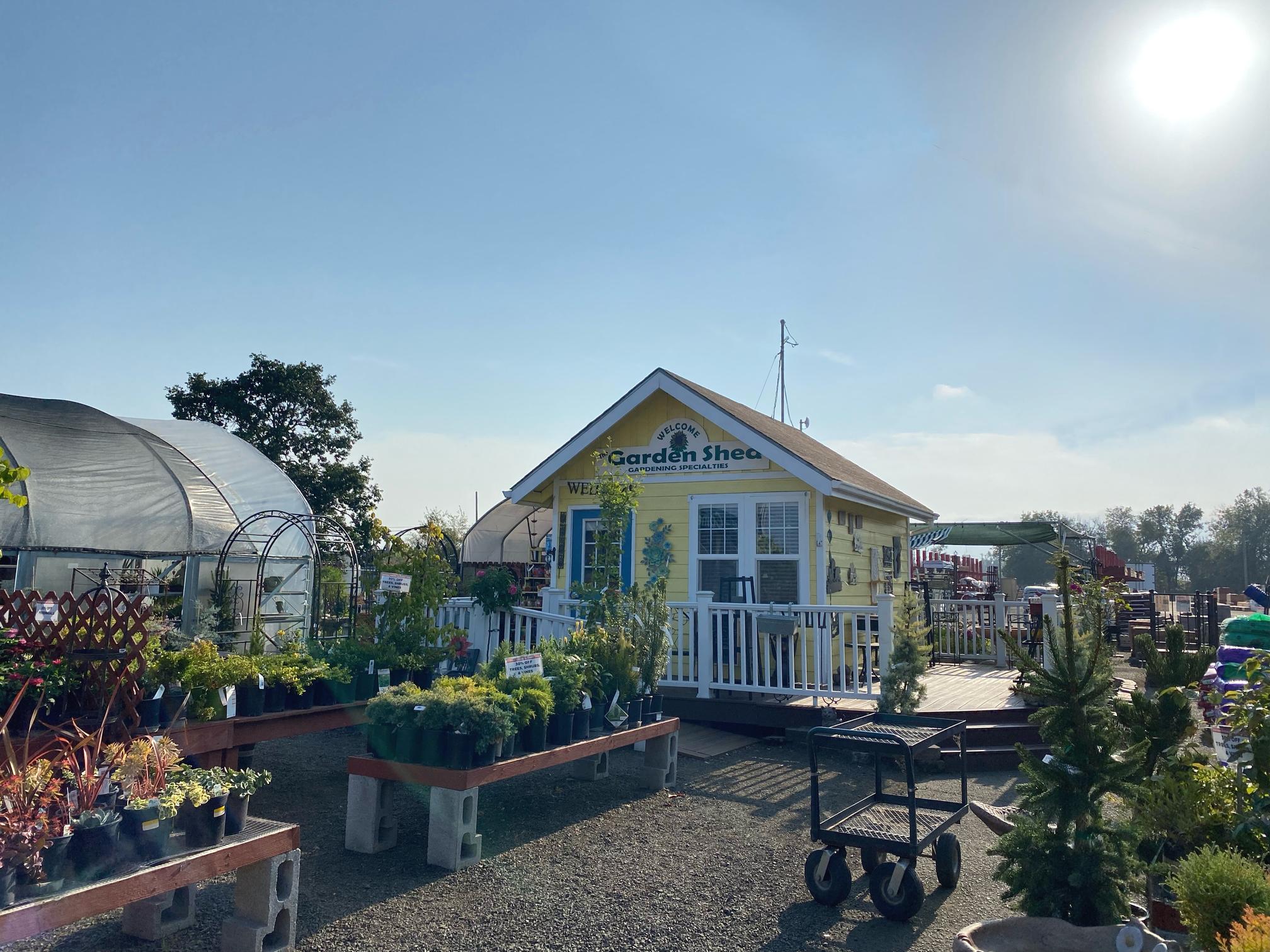


Oak Woodland and Savanna is a keystone habitat type within the Willamette Valley. Oak trees, includ ing Oregon White Oak, which is the predominant native oak species in Polk County, are associated with a great deal of other vegetation, as well as insect, mammal and avian species, and provide a large degree of the Valley’s biodiversity; more so than the intensely managed agricultural areas and conifer forests around them, making it a major conserva tion priority for many management agencies.
Oak communities often are found with Serviceberry, Snowberry, Poison Oak and many others not found in conifer communities. Oaks are also
often covered in many species of lichen and mosses that are not found on fir trees. Countless wildflowers are found in oak habitat as well, pro viding nectar for native pollinators such as bees, bats, and butterflies, including the endangered Fender’s Blue Butterfly found in large popula tions in Polk County.
In addition to vegetative bio diversity, many landowners can spot growths on oak tree branches, called galls, which unless they are extremely heavily covered, are not harmful to the Oaks. These galls are a response to wasp eggs from the family Cynipidae, of which there is 800 species in North America. These wasps are small, usually less than a centimeter, do not sting and have a very complex lifecycle which rely on Oak trees. Oaks provide nesting and resting places for migratory birds including species of concern like the Slender-billed Nuthatch and American Kestrel. Cavity seeking
woodpeckers, grey squirrels and long-eared bats also make homes in Oaks. Fir trees do not respond well to cavity creation; often quickly becoming snags, whereas the Oak is able to endure and provide while maintaining good health.
For those with grazing animals, a mature oak provides large amounts of shade to thankful animals, reducing stress which can translate to less meat, milk and wool. Unlike dense conifer, oaks in a savanna setting do not impact forage quantity while providing refuge during intense weather conditions. Oaks also provide perches for hawks and owls, which prey on voles, rats and other pasture and cropland pests without the need for expensive equipment or artificial perches.

Fir covered the Oregon Valley until around 6,000 years ago when Oak species began to dominate the land scape. About 2,000 years later the climate began to shift towards wetter weather and native populations be gan to actively manage the landscape to ensure the Oak’s dominance on the landscape using tools like fire to keep species like Douglas Fir and Big Leaf Maple from succeeding the Oak as the dominant tree species. Since then, about 95% of the Oak Sa vanna and Oak Woodland has been converted and lost to residential and agricultural development or replant ed as production forestry.
The vast majority of remaining Oregon White Oak Habitat is in private ownership, less than 1% of oak-dominated habitat in Oregon is protected in parks, wilderness or
other special management areas. The future of Oak Savanna and Woodlands depends upon the active participation of private landown ers. If you have oak trees on your property and are interested in more active management, contact the Polk SWCD to get started.
The Polk SWCD can provide excellent resources for landowners through cost sharing and grant pro grams to ensure the legacy of healthy oaks on their property. Our Regional Conservation Partnership Program (RCPP) is open to qualifying Polk County residents.
These programs can help land owners tackle invasive brush and herbaceous species like blackberry, non-native hawthorn, fir encroach ment and other major threats to the health of oak habitat. The RCPP program goes above and beyond the critically needed first steps of oak restoration by providing landowners
comprehensive options for brush management and weed control year over year and seeding appropriate grass and forb species for wildlife habitat management or pasturing under oaks while raising the variety and total value of nectar production available for pollinator species.
Scan the QR code below or go to polkswcd.com to find out more about the RCPP and access resources for oak management.
 Photo by Mark Bell Legacy Oak at Cornerstone
Photo by Mark Bell Legacy Oak at Cornerstone
Pre-order now!
BY MORGAN NEIL Outreach Coordinator Polk SWCDPolk County is in a unique lo cation in Oregon, straddling the western edge of the Willamette Valley and the eastern edge of the coast range. People are flocking to this area in droves because of its natural beauty, making it ever more important to preserve our landscape. You can help by incorporating native plants into your garden.
The Polk Soil and Water Conser vation District (SWCD) has a long tradition of holding native plant sales, like many SWCDs around the country. Our biannual sale is one way that we strive to engage the community in conservation practic es. This year’s fall sale will be hosted by the Delbert Hunter Arboretum in Dallas. This partnership will provide an opportunity for customers to talk with experts and gather resources.

This beautiful 7-acre park offers the unique chance to admire a living museum of native northwest plants and trees. On the south and east borders, the arboretum nestles against the gently flowing Rickreall Creek creating a rich riparian biosphere that complements the many species of plants and trees. The arboretum provides ecological niches for Oregon’s flora and fauna ranging from wetlands to rock gardens.
You can pre-order your native bulbs, perennials and seeds now. There are 47 varieties to choose from, including drought-tolerant species and plants for pollinators. We aim to put 2,000+ plants into the ground this fall and need your help to make this a successful event.

If you’re interested in volunteering, please go to polkswcd.com and click on the ‘get involved’ tab for more information.
Your purchase of native plants supports native habitat in your own backyard, and profits from the sale go to oak woodland and prai rie restoration at our conservation easements. These 275 acres preserve our natural landscape, attracting sensitive and native pollinators, birds and wildlife.
scan the QR code, visit our website at Polkswcd. com or contact our Outreach Coordinator
Morgan Neil at morgan.neil@polkswcd.com.
Photo file Purple Great Camas, Camassia leichtlinii BY SUZANNE TELLER Outreach Coordinator, Luckiamute Watershed Council
BY SUZANNE TELLER Outreach Coordinator, Luckiamute Watershed Council
Youmay have already heard the devastat ing news about the very first report of the Emerald Ash Borer (EAB) in Oregon - just 60 miles north of the Luckiamute and Ash Creek watersheds in Forest Grove. This exotic wood-boring beetle is considered one of the most destructive forest insects in U.S. history, and has killed hundreds of millions of ash trees throughout 35 U.S. states and 5 Canadian provinces. Oregon ash (Fraxinus latifolia) is the only native ash found in our watershed, and it is highly susceptible to EAB. Without interven tion, this invasive insect could ultimately cause the extinction of Oregon ash trees.
Although we are extremely saddened and disap pointed that the EAB has reached Oregon, the news does not come as a shock. The Oregon Department of Forestry, as well as many other state and local agen cies and organizations have been expecting this day to come and preparations have been underway for some time now - including gathering and saving Oregon Ash seeds from a wide variety of locations. For the past few years, the Luckiamute Watershed Council has also been preparing for the arrival of EAB by decreasing the pro portion of Oregon ash planted within our restoration areas and continuing to monitor our project sites for any sign of this pest. Additionally, we are helping to get the word out about EAB, and working on the devel opment of a rapid response protocol in the event that we do identify EAB within any of our project sites and need to remove them and replant with another species.
The best way to help minimize the damage caused by EAB is to remain vigilant, immediately remove any infested trees, and report any new sightings to the Ore gon Invasive Species hotline. EAB can also infest other trees in the ash family, including olive trees and white fringetree (Chionanthus virginicus). If you have either of these species on your property, be sure to keep an eye out for signs of infestation, such as the telltale “D” shaped exit holes.
More details, identification tips, and instructions for reporting EAB are found on the Oregon State Universi ty Extension website at: https://extension.oregonstate. edu/announcements/emerald-ash-borer-detected-ore gon-be-alert-report-sightings
Photo file Adult EAB is ½” longWe all want our outdoor spaces to be an extension of our home. Bring the inside out with paving stones, wall blocks and a fire features from Western Interlock. We’ll even show you how you can do it yourself at diywithwi.com!

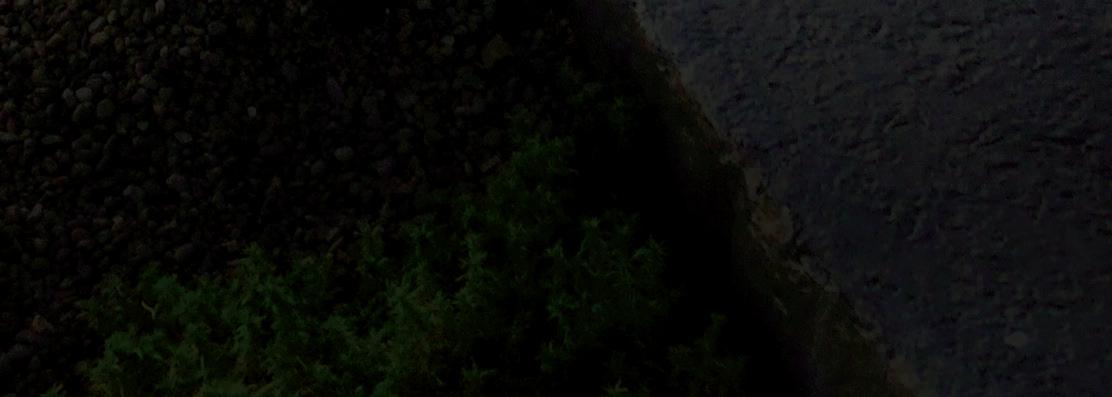
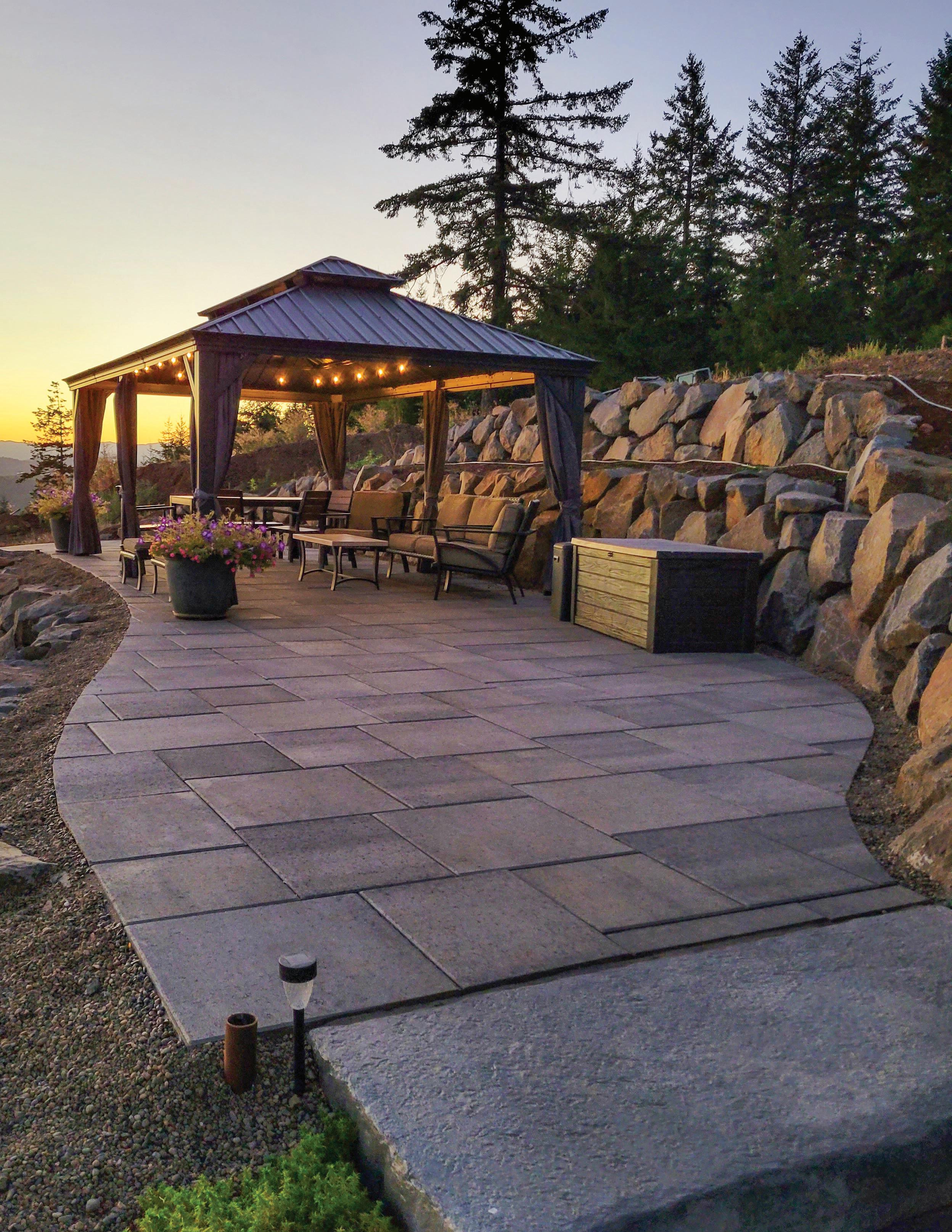
more at westerninterlock.comThe Concrete Advantage.










